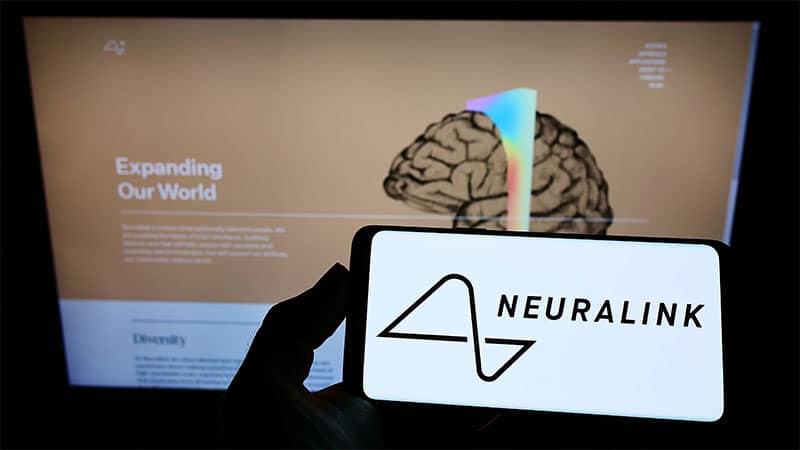This visionary technology is not simply a new tool in the arsenal of the ultra-wealthy; it is a potential pivot point for how UHNWIs interact with the world, manage their assets, and plan for the future. Neuralink is changing the way people invest by combining cognitive enhancements and in-depth health monitoring. This makes cognitive and health well-being the most valuable assets in a UHNWI’s portfolio. As we stand on the cusp of this radical transformation, this article delves into the multifaceted ways Neuralink could sculpt the landscape of ultra-wealth management, redefine the measures of health preservation, and forge new paths for legacy creation for the globe’s economic elite.
Understanding Neuralink’s Vision
Neuralink’s inception is deeply rooted in addressing some of the most complex challenges facing the human brain. The company’s vision is to develop a high-bandwidth brain-machine interface (BMI) capable of merging human cognitive capabilities with artificial intelligence (AI). This interface aims to not only create a new way of communicating by letting people send their thoughts and experiences directly to each other, but it also promises to improve cognitive abilities like memory and attention, and it may even be able to restore motor, sensory, and visual functions.
The initiative also explores the possibility of treating neurological disorders, with the technology already having received U.S. Food and Drug Administration clearance for an in-human clinical trial as of May 2023. This clearance marks a significant milestone, as previous tests have been limited to animals such as rats, mice, monkeys, sheep, and pigs. The goal is to move towards trials that can establish the efficacy and safety of the technology in humans.
However, there are risks associated with this technology, which include brain injury, infection, physical side effects such as bleeding and seizures, psychological side effects, allergic reactions, movement of implanted materials, and cybersecurity risks. Addressing these concerns is critical for the responsible advancement of Neuralink’s technology. Eligibility for future clinical trials has been outlined, emphasising U.S. residency, legal age, and specific conditions like quadriplegia and aphasia. The criteria ensure that participants can legally consent and are likely to benefit from the technology, given their medical conditions.
Technological Advancements
Neuralink’s technological advancements involve sophisticated BMI systems that utilise ultra-thin electrodes, or “threads,” implanted into the brain. These threads are connected to a coin-sized microchip that acts as a command centre for processing and interpreting neural signals. The signals are then wirelessly transmitted to external devices for control or further analysis.
The potential of this technology extends to medical breakthroughs, such as alleviating symptoms of Parkinson’s disease, epilepsy, or depression, by modulating specific neural circuits. The process of installing this technology is currently invasive, requiring neurosurgical procedures, but efforts are being made to streamline and minimise its invasiveness, potentially allowing for outpatient procedures in the future. Moreover, Neuralink’s advancements could transform our understanding of the brain by providing real-time monitoring and analysis of neural activity. This could lead to discoveries in neuroscience and the development of new treatments for neurological disorders.
The company’s forward-looking approach is to create a future where enhanced cognition and memory, direct communication with AI systems, and new educational methods are not just possible but commonplace. As the technology progresses, the potential applications seem to be limited only by our imagination, with Neuralink positioned to significantly alter our understanding of the brain and the interface between humans and machines.
Neuralink in the Life of UHNWIs
For ultra-high-net-worth individuals, the prospect of cognitive enhancement and health monitoring is not a mere luxury; it’s a strategic investment. Neuralink wants to be a leader in brain-computer interfaces (BCIs), which could help ultra-rich people think more clearly by using technology. This enhancement includes improvements in memory, processing speed, and overall cognitive abilities through a direct interface with digital devices. Beyond personal betterment, such advancements could offer UHNWIs unprecedented control over their interactions with the digital world, such as communication without physical interaction and more efficient management of their financial portfolios.
Moreover, the implications for health monitoring are profound. Brain-computer interfaces (BCIs) like Neuralink might give us real-time information about our brain health. This could help find neurological conditions earlier and maybe even help doctors treat them better, which is important for ultra-rich people who worry about the high costs of treating these diseases. By potentially detecting early signs of conditions like epilepsy or Parkinson’s disease, UHNWIs could safeguard their health, a cornerstone of preserving and managing wealth.
The Paradigm Shift in Wealth and Health
The integration of Neuralink’s technology signifies a paradigm shift, positing health as an invaluable wealth asset. UHNWIs have long sought ways to protect and enhance their health as a means to ensure longevity and quality of life, which, in turn, affects their ability to manage and grow their wealth. Neuralink’s promise to restore motor, sensory, and visual functions could not only improve the quality of life but also extend the active years of wealth management and enjoyment of the fruits of one’s labour.
BCIs have the potential to redefine how UHNWIs approach their health, with the capacity to monitor and possibly treat symptoms of burnout, fatigue, anxiety, and depression through targeted electrical stimulation. This could translate into better mental health management, a critical component of effective decision-making and wealth management.
In the near future, UHNWIs might benefit from BCIs to improve their cognitive abilities, such as focus and memory, through methods like real-time biofeedback, which Musk likens to having a “fitbit in your skull.” This could lead to more effective wealth management strategies, as enhanced cognitive functions can translate to better financial decision-making and innovation in wealth creation and preservation strategies. So, Neuralink’s potential holds two great benefits for UHNWIs: it could improve their cognitive abilities and give them a more proactive way to manage their health, both of which are essential for keeping and growing their wealth.
Investment in Neuralink Technology
The main way that Neuralink makes money is by creating advanced brain-machine interfaces (BMIs). These are used to treat neurological disorders and, in the long term, to improve people’s general cognitive abilities. The company’s revenue model is projected to encompass sales of its BMIs, surgical equipment, and potential subscription models for updates and support. As part of the strategic direction, the company will enter new markets where people want advanced health solutions and cognitive abilities. This will likely lead to financial growth through partnerships, attracting investors, and market penetration.
Risk and Reward Analysis
Investing in high-tech solutions like Neuralink comes with a substantial risk-reward profile. On the risk side, the biotech industry, including companies like Neuralink, faces challenges such as stringent regulatory landscapes, notably from bodies like the FDA, which are known for their rigorous and evolving drug and device approval processes. The average timeline for FDA drug approval is extensive, and the success rate is low, which underscores the significant investment risks in this sector.
However, where there is risk, there is also potential for significant reward. The drive towards innovation in treating neurological conditions and the allure of potentially revolutionising human-computer interaction could yield substantial returns. The biotech industry, despite its risks, is known for its potential to pave the way for groundbreaking discoveries and progress.
Investments in companies like Neuralink, therefore, represent a high-risk but potentially high-reward opportunity for UHNWIs, aligning with their interest in leading-edge technologies and groundbreaking health solutions. It is crucial for investors to weigh these aspects carefully, considering both the potential for substantial impact and the inherent uncertainties within the biotech field.

Ethical and Social Considerations
While everyone is excited about Neuralink’s technological advances, it is important to talk about the moral problems and social effects that brain-computer interfaces can have, especially for UHNWIs and society as a whole. If BCIs really do give people unmatched cognitive advantages, it raises concerns about how these advantages should be shared fairly. Access to cutting-edge health and cognitive boosts could make social differences even worse by giving UHNWIs not only economic but also cognitive dominance, which could widen or reinforce the existing socioeconomic gaps.
The ethical AI UHNWIs conversation extends to the data privacy and autonomy of individuals. BCIs involve intimate access to one’s neurological patterns and, potentially, thoughts, posing significant risks regarding data exploitation and psychological privacy. Ethical AI frameworks must be robust and foresighted to protect individuals, especially UHNWIs, who might be vulnerable to unique privacy intrusions given their status and influence. The advent of this technology also stirs debate around the very essence of human intelligence and the moral implications of artificial enhancement. As such, it calls for a societal dialogue on the responsible stewardship of this potent technological force, ensuring that it serves humanity’s broadest interests rather than an elite few.
Preparing for a Neuralink-Enabled Future
As Neuralink progresses towards integration into everyday life, UHNWIs and their wealth managers must be strategic in anticipating and preparing for the profound shifts this technology may usher in. UHNWIs should stay abreast of advancements, not only to harness the potential benefits for cognitive and health enhancements but also to navigate the associated risks and ethical considerations. Wealth managers and advisors must equip themselves with knowledge about Neuralink’s trajectory, incorporating its potential into long-term wealth and health strategies.
Preparing for AI UHNWI-centered futures require thorough planning, such as keeping digital and neurological data safe, knowing the legal and moral effects of cognitive enhancement, and keeping up with how regulations are changing. By embracing a proactive approach, UHNWIs can ensure they are at the vanguard of this exciting technological frontier, leveraging Neuralink’s potential to amplify their cognitive prowess, enhance their health outcomes, and ultimately reframe the legacy they leave behind in an AI-augmented world.








